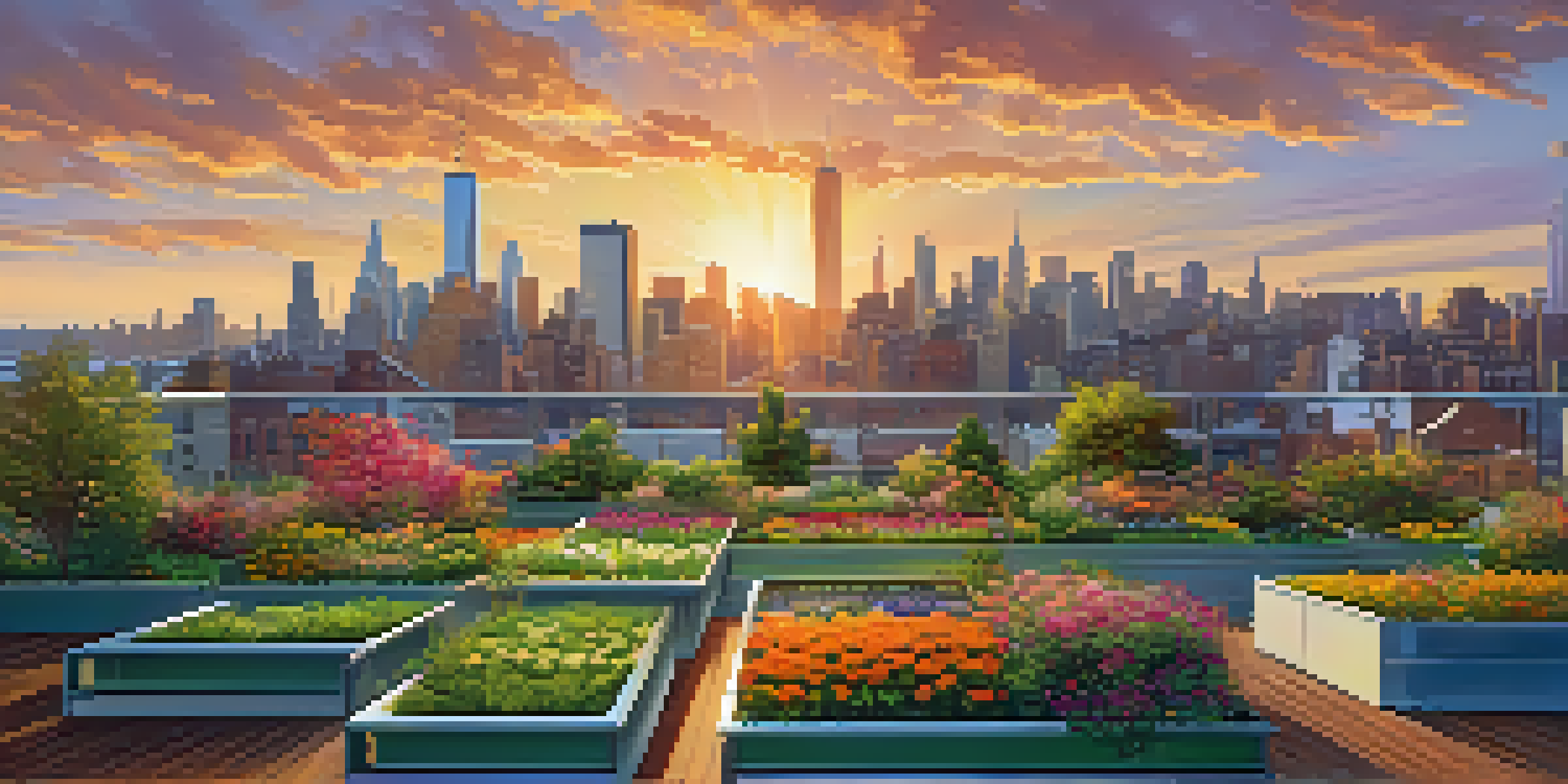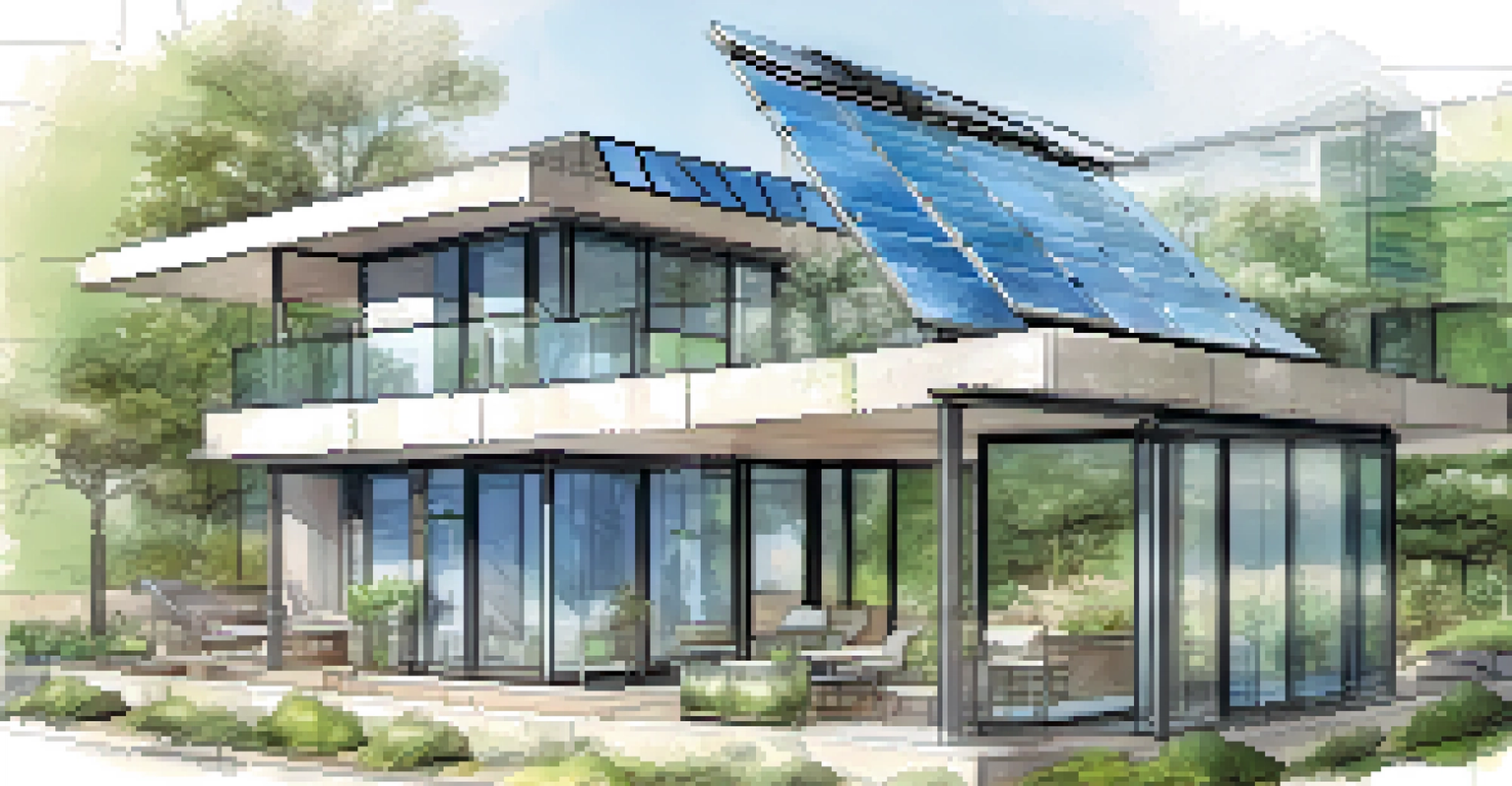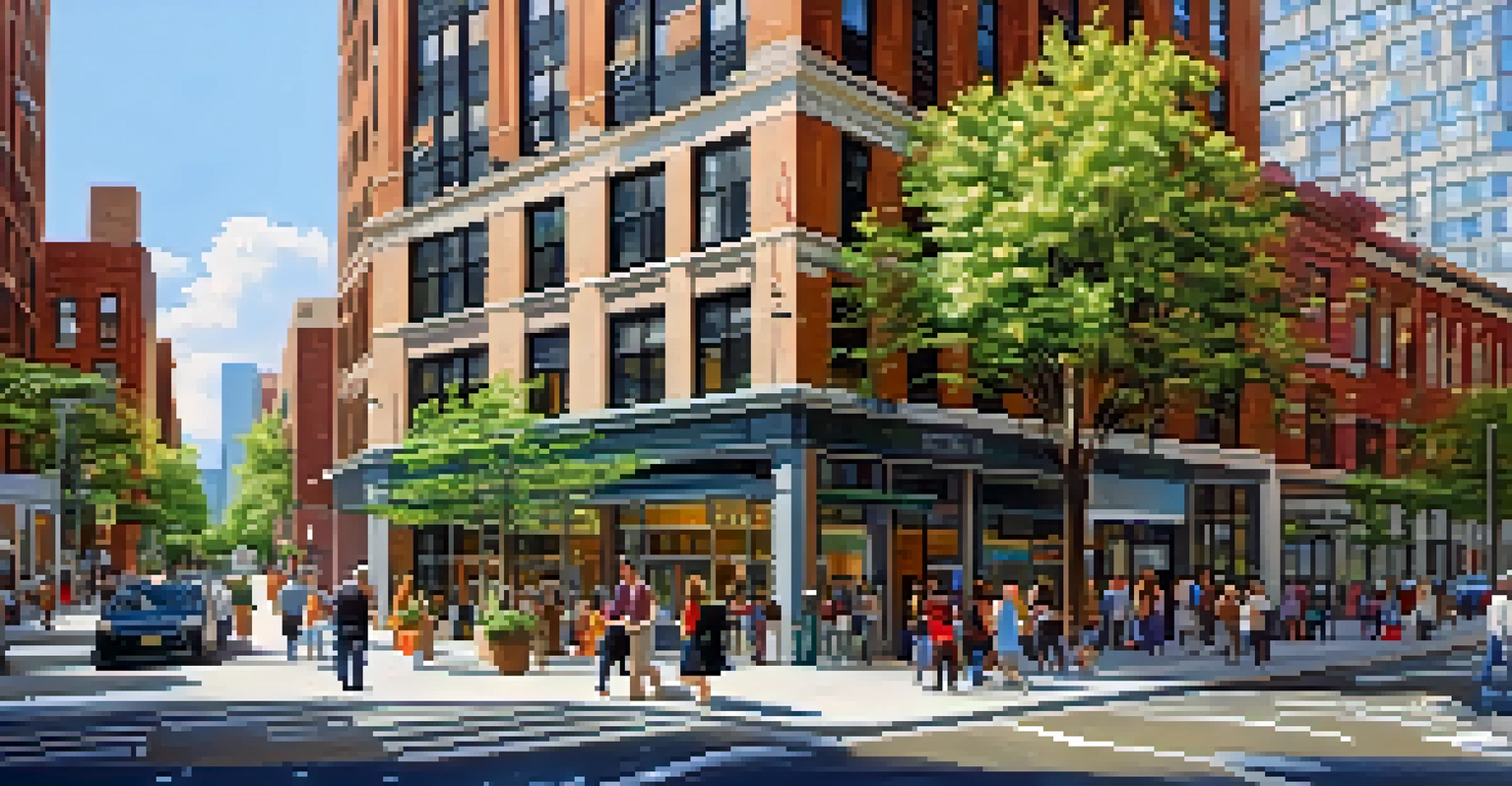New York City's Green Building Code: A Comprehensive Overview

Introduction to New York City's Green Building Code
New York City's Green Building Code is a vital part of the city's commitment to sustainability. Introduced to promote eco-friendly construction practices, it sets forth guidelines that enhance energy efficiency and reduce environmental impact. Understanding this code is essential for builders, architects, and anyone interested in sustainable urban development.
Sustainability is no longer about doing less harm. It’s about doing more good.
The implementation of this code reflects New York City's broader efforts to combat climate change and improve air quality. By establishing clear standards, the code helps ensure that new buildings contribute positively to the environment. This initiative not only benefits the city but also serves as a model for other urban areas aiming for sustainability.
As we delve into the specifics of the Green Building Code, we'll see its implications for various stakeholders. From the materials used in construction to the technologies employed, every detail is designed to foster greener practices. Let’s explore how these regulations shape the future of building in the city.
Key Principles of the Green Building Code
At the heart of the Green Building Code are several key principles that guide sustainable building practices. These principles include energy efficiency, water conservation, and the use of sustainable materials. Each principle is designed to minimize the environmental footprint of buildings and create healthier spaces for occupants.

Energy efficiency is particularly emphasized, with standards that encourage the use of renewable energy sources and high-performance insulation. This not only lowers utility costs for residents but also reduces greenhouse gas emissions. By prioritizing these elements, the code aims to create a more sustainable urban environment.
Sustainability Through New Regulations
New York City's Green Building Code establishes guidelines to promote eco-friendly construction and improve energy efficiency.
Water conservation is another critical aspect, promoting technologies like rainwater harvesting and low-flow fixtures. In a city where water resources are precious, these practices can significantly reduce consumption. Together, these principles form a comprehensive framework for sustainable building in New York City.
Major Components of the Green Building Code
The Green Building Code consists of several major components that address different aspects of building design and construction. These components include site selection, energy performance, water efficiency, and indoor environmental quality. Each section provides specific guidelines that must be followed to achieve compliance.
The greatest threat to our planet is the belief that someone else will save it.
Site selection, for example, encourages developers to consider the ecological impact of their projects. By prioritizing locations that minimize disruption to natural habitats, the code fosters a more balanced urban ecosystem. This thoughtful approach ensures that new developments coexist harmoniously with the environment.
Energy performance standards are equally rigorous, requiring buildings to meet specific efficiency benchmarks. This can involve the integration of advanced heating and cooling systems, as well as solar panels. By adhering to these components, builders contribute to a greener future while enhancing the livability of the city.
The Role of LEED Certification in NYC
LEED, or Leadership in Energy and Environmental Design, plays a significant role in New York City's Green Building Code. This internationally recognized certification system encourages sustainable building practices and recognizes projects that meet high environmental standards. Many developers aim for LEED certification to showcase their commitment to sustainability.
Incorporating LEED principles into the Green Building Code enhances its effectiveness by providing a measurable framework for green building practices. This alignment encourages builders to adopt innovative technologies and sustainable materials that may otherwise be overlooked. As a result, more projects are achieving recognition for their environmental efforts.
LEED Certification Enhances Standards
The integration of LEED certification within the Green Building Code encourages builders to adopt innovative and sustainable practices.
For New Yorkers, LEED-certified buildings often mean healthier living spaces and lower utility costs. The emphasis on sustainability not only benefits the environment but also enhances the quality of life for residents. Understanding the connection between the Green Building Code and LEED certification is crucial for those involved in the construction industry.
Benefits of the Green Building Code for NYC
The implementation of the Green Building Code brings numerous benefits to New York City and its residents. First and foremost, it contributes to improved air quality by reducing emissions from buildings. This is especially important in a densely populated urban area where pollution can significantly impact health.
Additionally, the code promotes energy efficiency, leading to lower utility bills for residents. As buildings become more energy-efficient, occupants enjoy greater comfort without the burden of high energy costs. This financial benefit can be particularly appealing for low-income families who may struggle with rising living expenses.
Moreover, the adoption of green building practices fosters a sense of community pride. Residents are more likely to support initiatives that enhance sustainability and improve their neighborhood's aesthetic. Ultimately, the Green Building Code not only addresses environmental concerns but also enhances the quality of life for all New Yorkers.
Challenges in Implementing the Green Building Code
While the Green Building Code offers numerous advantages, its implementation is not without challenges. One significant hurdle is the initial cost of sustainable construction practices. Many builders face higher upfront expenses when integrating green technologies, which can deter investment in eco-friendly projects.
Additionally, there may be a lack of awareness or understanding of the code among some developers and contractors. This knowledge gap can lead to non-compliance or inadequate application of green practices. Providing education and resources is essential to ensure that everyone involved in a project understands the importance of adhering to the code.
Benefits for Residents and Environment
The Green Building Code improves air quality and reduces utility costs, ultimately enhancing the quality of life for New Yorkers.
Finally, the evolving nature of technology means that the code must continuously adapt to include new innovations. Keeping up with advancements in sustainable design can be a daunting task for regulators. However, fostering collaboration among stakeholders can help bridge the gap between policy and practice, ensuring the code remains relevant and effective.
Future of the Green Building Code in NYC
Looking ahead, the future of New York City's Green Building Code appears promising, with ongoing updates and revisions to enhance its effectiveness. As environmental concerns continue to grow, the city is likely to adopt more stringent regulations to further promote sustainability in construction. This evolution reflects a commitment to addressing climate change and improving urban living.
Emerging technologies, such as smart building systems and advanced materials, will play a pivotal role in shaping the future of the code. These innovations offer new ways to enhance energy efficiency and reduce waste. By integrating these technologies into the code, New York City can stay at the forefront of sustainable building practices.

Ultimately, the Green Building Code will continue to be a cornerstone of the city's sustainability efforts. As more developers embrace green building practices, we can expect to see a transformation in the urban landscape, leading to healthier and more resilient communities. The journey toward a greener New York City is just beginning.